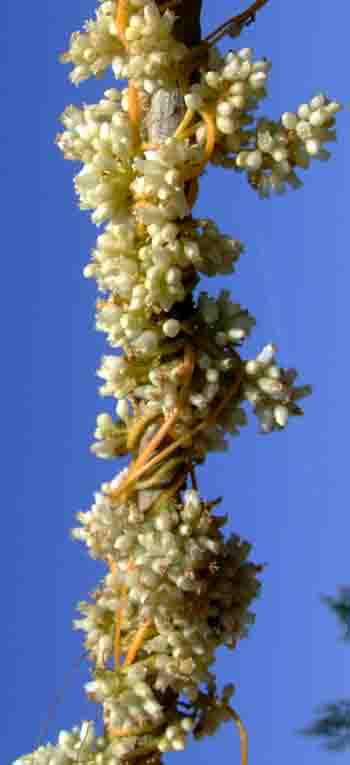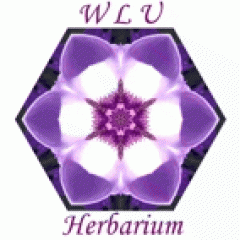This fascinating group of plants is often misunderstood. A good friend told me that impatient systematists should be given a warning when beginning the study of dodders, similar to Dante’s inscription at the gates of Inferno: “Abandon hope all you who enter here” (“Lasciate ogne speranza, voi ch’intrate”). I do not agree. Personally, I believe that Cuscuta is no more complicated from a systematic point of view than other difficult groups of vascular plants (thank God for that!), but it is for sure more “technical” and

demanding than many others. This is because before applying any taxonomic tool, one has to pass these obstacles:
- The “yellow spaghetti” syndrome: With the naked eye most dodders look alike. Cuscuta sp. have filiform stems, yellow, orange, or reddish, glabrous, trailing or dextrorsely twining and attached to the host by numerous small haustoria. Leaves are reduced to alternate, minute scales. Most characters are hidden inside the tiny flowers, and the identification keys are often vague or laborious to use. Sometimes obvious differences are difficult to describe and included in the keys because they refer to subtle textures, degrees of fleshiness, etc. The examination of specimens is often a lengthy process because rehydration of flowers with dissection and examination under a good microscope are necessary. Patience and practice seem to work best! The fastest way to learn Cuscuta is to study the older collections identified by the masters of the genus, Engelmann, Yuncker and Hunziker.
- The “mysterious identity” syndrome: Numerous Cuscutas species and varieties are known only from their type specimens. These are scattered worldwide, and often consist of a few more or less damaged flowers and/or capsules. Other species are extremely rare with no more than a couple fragmented specimens available for study. This is a major impediment because one cannot form an accurate representation of what a taxon is based only on its protologues/descriptions or line-drawings. Then, assuming one is lucky and a certain type or collection is located in a friendly herbarium, how can one hope to extrapolate from a few fragments the whole range of variation within a taxon?
However, these “technical” obstacles can be overcame. Moreover, I am more than happy to examine any specimens you may have. Often, a few flowers sent in an envelope are more than enough. Contact Mihai.
